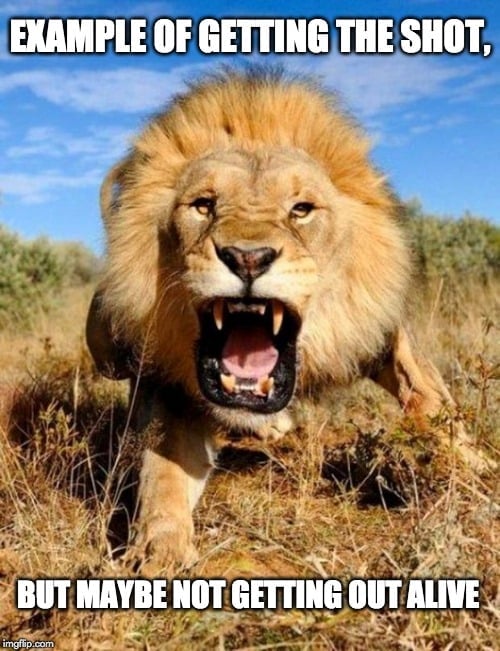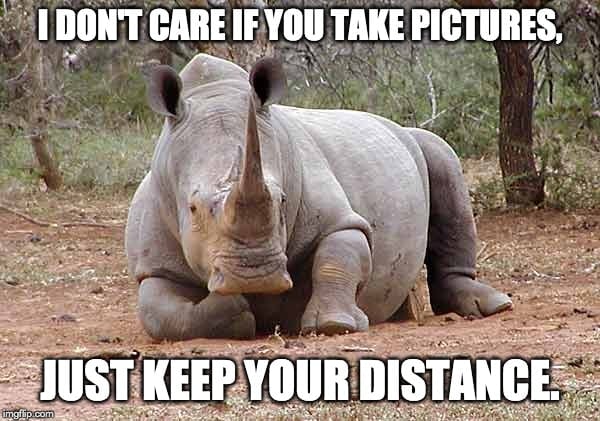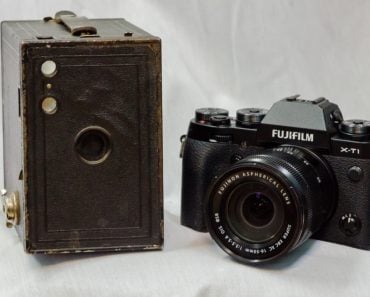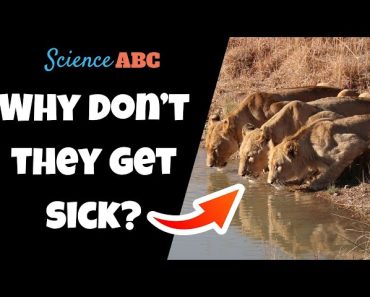Table of Contents (click to expand)
Wildlife photographers and videographers use a combination of advanced equipment, experience, respect, patience, personal knowledge, research, and common sense to stay safe, but also capture unforgettable footage of the world’s most fascinating creatures.
It has been nearly 15 years since Planet Earth first appeared in our homes and lives, forever changing the game in the realm of nature documentaries. A combination of incredible footage, unbelievably intimate shots, and the soothing storytelling of David Attenborough has made it a cultural treasure. The ability of filmmakers to capture such detailed shots of wild animals in some of the most far-flung places on the planet is undeniably impressive, but how do they do it?
How do filmmakers capture footage of octopuses tucking themselves away in coral reefs, or lions attacking an elephant in the middle of the night, or a congress of orangutans hanging out in the trees without being attacked or scaring away their photographic prey?

Recommended Video for you:
How Do Wildlife Photographers Stay Safe?
While being a wildlife photographer is a challenging, frustrating, and potentially dangerous career, there are many strategies and factors in play that keep both the shot-snappers and the wildlife safe!
Keeping Their Distance
Perhaps the best strategy for staying safe in the field is keeping your distance from a wild animal, and carry a good enough zoom lens that enables you to get clean and captivating shots from a safe range. Most smartphone cameras and even basic point-and-shoot cameras don’t have impressive zoom capabilities, resulting in blurry or grainy images when they are cropped or blown up.
However, filmmakers working on television shows like Blue Planet and Planet Earth have the best equipment that the photographic world has to offer, with 400mm or even 800mm zoom lens, meaning that they can get a clear shot of a baby elephant’s face from dozens or even hundreds of feet away. The key to getting such intimate and authentic shots in the wild is not disturbing the animals or allowing your presence to make them uncomfortable. Keeping your distance and knowing the best equipment to use is actually the key to staying safe and delivering incredible footage.

Knowing The Animals
Even if you buy the best wildlife camera on the market and trudge out into the wilderness with a brand new kit, that is no guarantee that you’ll be able to capture powerful shots. Knowing precisely what wildlife you’re trying to spot, where they live, when they’re active, and how they spend their time is essential to maximizing your time in the field. Many of the best filmmakers work closely with scientists and experts to better familiarize themselves with their photographic quarry.
If a photographer understands the cyclical movements or migration patterns of animals, he can then position himself in an ideal spot and simply wait for the animals to pass by his location, allowing him to be an unobtrusive and perfectly positioned observer. This strategy is applicable in every ecosystem and context; if you are unfamiliar with an animal, you will spend a lot more time and energy trying to get the perfect shot—or simply cross your fingers and hope you get lucky!
Patience
As mentioned above, a lot of wildlife photography consists of waiting around for the desired creature to poke its head into the world and allow itself to be captured on film. Behind-the-scenes footage of wildlife documentaries often includes camerapeople commenting on the long days and limited action on such shoots. The best wildlife videographers are patient and calm, often waiting days or weeks for their single opportunity to capture a rare mating dance, a territorial battle, a hunt or a live birth.
This is not a hobby for those seeking instant gratification, but having this patience also keeps the camera crews safe. Pushing too far into an animal’s territory, trying to artificially trigger a noteworthy event, or being too invasive during a special moment will result in more danger to the photographers and the animals. Nature is unpredictable, but for those professional who respect that fact, patience must often rule on documentary expeditions.
Personal Experience
For the same reason that you can’t simply buy some expensive gear and become a famous wildlife photographer, you also need an incredible amount of practice and experience in the field to get consistently good work as a videographer or cameraperson. You need to be able to read the subtle signals of nature, a shift in behavior of some creatures, a change in the weather indicating a better or worse chance of capturing the footage, the daily cycles of the ecosystem, and the instinct of knowing when something is about to happen. There is a comfort and awareness of nature and wildlife that only develops after many years of working in the field. This sixth sense helps to keep professional wildlife photographers safe and looking in the right places for a slice of striking footage.
Disinterest
In the case of some animals, particularly those in the savannah grasslands of Africa, or other commonly visited regions, animals have grown used to seeing humans. Whether it is the buffalo of Rocky Mountain National Park or the Marsh Pride in Kenya’s Masai Mara National Reserve, some of the most photographed and legendary beasts on our planet have been exposed to humans before. Also, in general, animals try to avoid conflict.
Provided you don’t represent a clear and present danger, most animals will do their best not to physically engage with a human. As you often see in the wild with different species; two herbivores will live in close proximity, but generally won’t have problems with one another, so long as they both feel safe and comfortable. At the end of the day, a human is another animal in the wild; most animals don’t want to cause a fuss and will leave you alone!

Common Sense
While photographers at the end of a two-week shoot with no footage may feel particularly daring or desperate, most wildlife camerapeople don’t get far in the business without common sense. Impinging on an animal’s space when they’re hunting, or protecting their young, is a foolish mistake that even moderately experienced professionals wouldn’t make. Though incidents do occur, and attacks have happened, a combination of staying calm, using what training you have, and knowing as much as possible about an animal’s behavior will usually keep you safe!
Cutting Corners And Wildlife Preservation
A century ago, capturing impressive shots of wildlife was a much more daunting and dangerous profession. Remember, they lacked high-tech zoom cameras, geo-positioning satellites, helicopters for accessing remote locations, and digital technology for constant filming and taking thousands of photos. As the demand for amazing photos and videos of wildlife has increased, so too have the technological advances that have made the job of wildlife filming much easier. Although purists may think some of these strategies are “cheating”, they have enabled incredible videos that likely would have been impossible without them.
Drones
Camera and lens advancement has certainly changed the game, but drones have had nearly as great of an effect. Those sweeping overhead shots that smoothly rise above a river valley or drop off the edge of an iceberg are only possible because of drone technology, often quadcopters or octo-copters that have nearly perfect stability and 4D cameras attached. In remote locations, such as islands or Antarctica, places where the use of helicopters isn’t viable, these drones are making it possible to see places inaccessible by any other means. There are also small camera drones, sometimes called “zombie drones”, that can be directed over terrestrial locations for close-up shots inside insect colonies, bird’s nests and other small-scale, intimate locales that are challenging for any human to access!
Camera Traps
Camera traps are another common ploy used by videographers, especially for animals that are highly suspicious of any human presence. Some animals won’t return to a location for days or weeks if they detect the camera crews. Camera traps are cameras activated by movement, and while there is some element of luck and chance involved in this, food or lures may be used to draw wary animals into frame. Again, some people consider this cheating, or manipulating a natural habitat for the purposes of a documentary, but others argue that these are less invasive strategies than actually putting a human in the middle of a penguin colony.

Perhaps most importantly, for amateur and professional wildlife photographers alike, preserving the sanctity and safety of wildlife should be paramount. Protecting yourself against an animal attack is important, certainly, but you should never put yourself in a position—whether through inexperience or carelessness—that makes an attack more likely. Since wildlife filming is unlikely to stop or slow down anytime soon, whatever tools allow for less conflict or discomfort between man and beast should be encouraged.
A Final Word
Being a wildlife photographer is an invigorating, challenging, patience-testing, and inspiring profession, but to do it safely, there are a number of things to consider and plan for. Getting a once-in-a-lifetime shot simply isn’t worth it if you put your life or the safety of wildlife subjects at risk!













